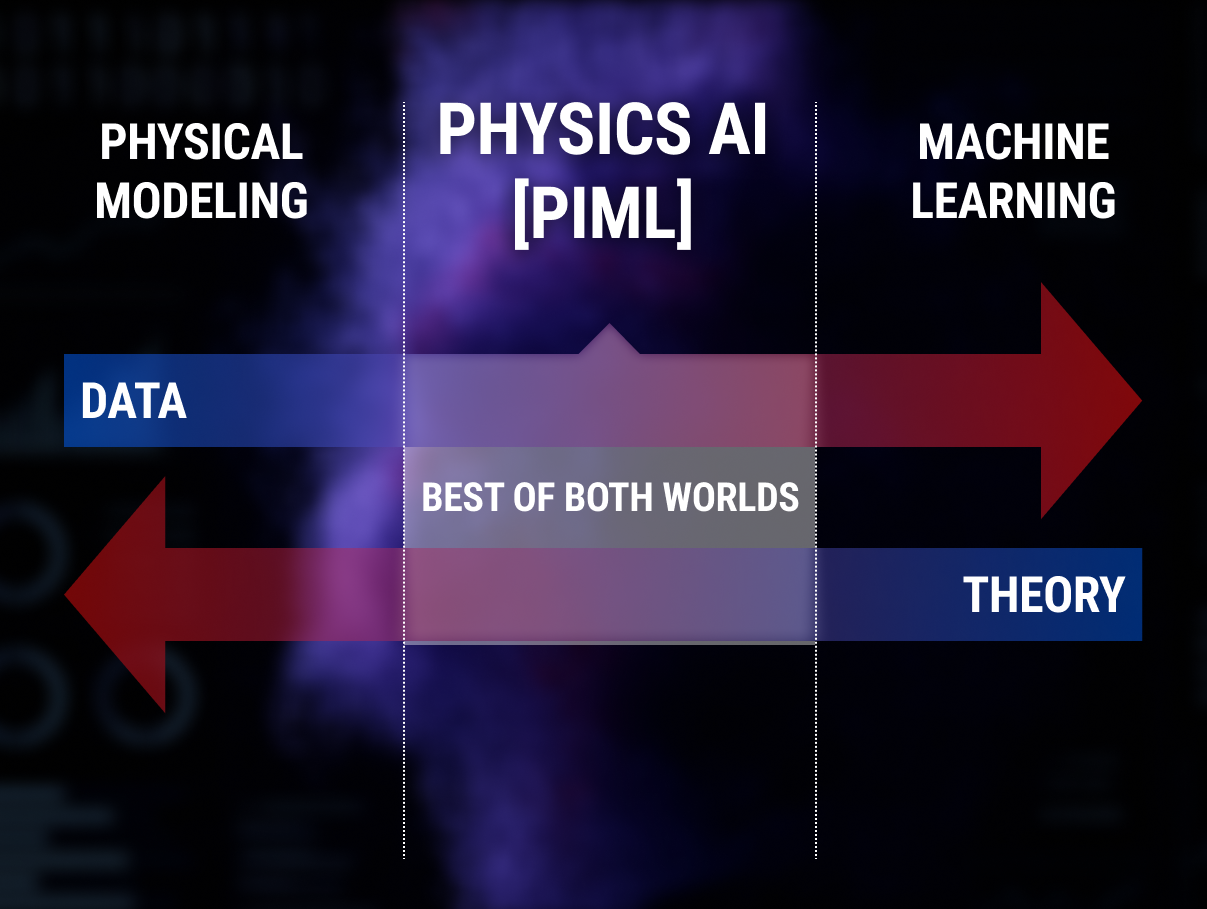HOW PHYSICS AI SOLUTIONS ARE CHANGING THE GAME IN HIGH-TECH INNOVATION
In a world where technology moves fast, companies need to keep up. They want to innovate quickly, make better products and cut costs. This is where Physics AI comes in: an exciting combination of physics and artificial intelligence that's transforming industries from chip-making to aerospace.

WHAT IS PHYSICS AI?
In simple terms, Physics AI means using AI models that are trained with knowledge of the physical world. Instead of just throwing a lot of data into a black box, these models also follow the laws of physics. That makes them more accurate, reliable and useful. Especially when there's not much data to begin with.
This approach is often called Physics-Informed Machine Learning (or PIML). It helps make predictions faster and better, without ignoring the science behind the system.
WHY TRADITIONAL SIMULATIONS FALL SHORT - AND HOW PHYSICS AI FIXES THAT
Traditional physics simulations are powerful but often very slow. They take a lot of time and computer power. That doesn't work well in real-time production or fast-paced research.
Physics AI solves that. It creates so-called "surrogate models": lightweight versions of those heavy simulations. These models are much faster but still accurate enough to trust. This means engineers and researchers can run more tests, adjust designs on the fly and make quicker decisions.
A GLIMPSE INTO THE TAILORED AI SOLUTIONS BY SIOUX
At Sioux Technologies, we're not just applying Physics AI – we're crafting tailored AI solutions grounded in physics, data and deep domain expertise. We work with clients to deeply understand their systems, challenges and goals. Whether it's design optimization, inverse modeling or real-time process control, we make sure our solutions integrate smoothly into the client's workflow. No black boxes, just clear, collaborative tools.
These models don’t just replace older methods, they unlock entirely new possibilities. With advanced techniques like Physics-Informed Neural Networks (PINNs) and Neural Operators, they let us embed physical laws directly into AI systems, even if some of those laws are unknown or incomplete. This makes them ideal for solving tough problems where traditional models are too slow or complex. Want to simulate ten thousand design variations overnight? Or infer hidden physical properties from sensor data? These are exactly the kinds of problems our Physics AI solutions are built to solve.
We also use methods like Gaussian Process Regression, Kernel Engineering, and Deep Kernel Learning to build fast, accurate surrogate models that need less data and deliver more value.
And beyond real-time modeling, we also tackle:
- System Identification
- Inverse Problems
- Symbolic Regression
- Uncertainty Quantification
- Multi-Physics Simulations
Whether it's testing thousands of design options overnight or spotting subtle changes in a production line in real-time, our Physics AI solutions make it possible.
PUTTING PHYSICS AI TO THE TEST FOR ASML
A great example of leveraging Physics AI is our project with ASML, a leading company in the semiconductor industry. ASML is renowned for its cutting-edge lithography machines used in chip manufacturing. They developed a new measurement principle, an innovative way to analyze chip features, but needed to prove it could work at scale in a real factory.
The challenge? The original simulations were too slow for real-time use. We applied physics-informed machine learning to create fast, surrogate models that could handle production-level data without losing accuracy. These models made it possible to test, validate and adjust the system on the fly – speeding up development and opening the door to new process control techniques.
This wasn't just a technical win. For ASML, it meant quicker time to market, more reliable performance in the fab and the confidence to scale a new method that once seemed too risky.
THE BEST RESULTS COME FROM WORKING TOGETHER
The impact of our solutions is profound. By developing data-driven models, we replace slower, traditional models with faster, more efficient ones. While AI can handle complex tasks at speeds beyond human capability, the development of these models relies heavily on human expertise. At Sioux Technologies, our teams of physicists and data scientists work closely together. We bring in domain knowledge, check if models make sense and fine-tune them for each client's need.
As our colleague Mark van den Broek, Technology Manager AI at Sioux, puts it:
"The common perception of AI is that you can throw a lot of data into a model and get gold out of it. But that's rarely the case. You need to combine data with everything you know about the problem or task to make it work effectively."
Mark's point highlights something important: Physics AI isn't about replacing physics with AI. It's about combining the two. If you understand the physics behind a process and feed that into your model, you don’t need enormous datasets. The model becomes smarter, faster and better at adapting to new situations – even ones it hasn’t seen before. That means lower cost, less trial-and-error and more trust in the results.
LOOKING AHEAD
Physics AI is just getting started. As the tools and methods improve, the possibilities grow. From real-time control in factories to automated scientific discovery, we're only scratching the surface of what this technology can do.
So if you're working in a field where physics matters (and let's face it, that's most of engineering), Physics AI is something you should keep an eye on.
BRING AI
TO LIFE 
Curious how we can help you? Send us your questions, big or small, and we’ll get back to you within one working day.
CONTACT US AT AI-SOLUTIONS@SIOUX.EU
